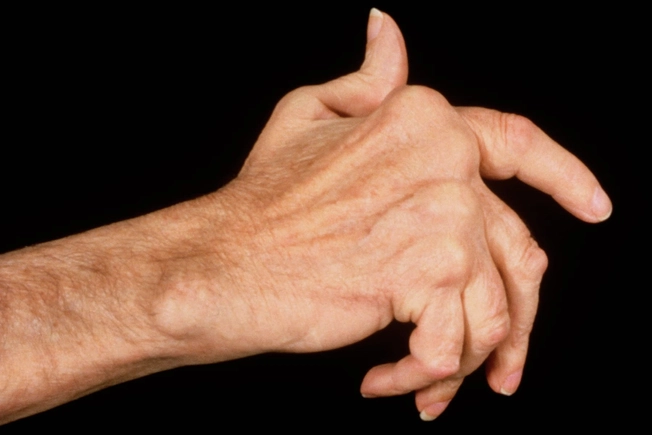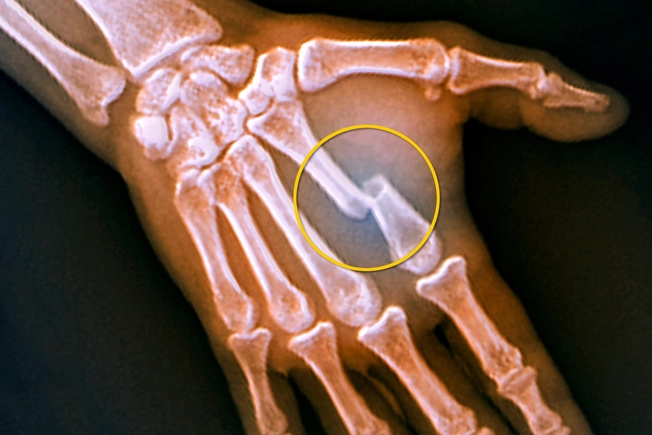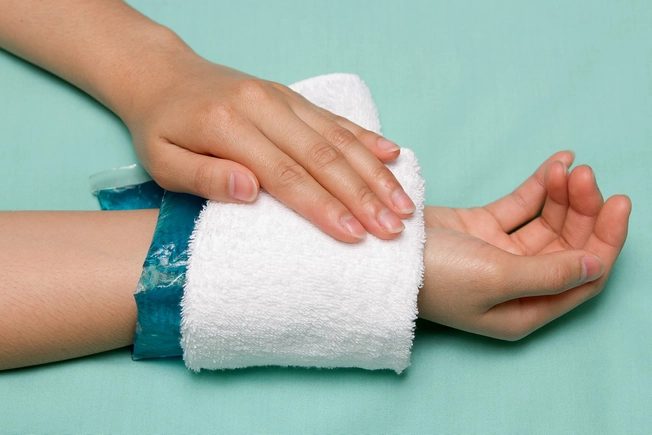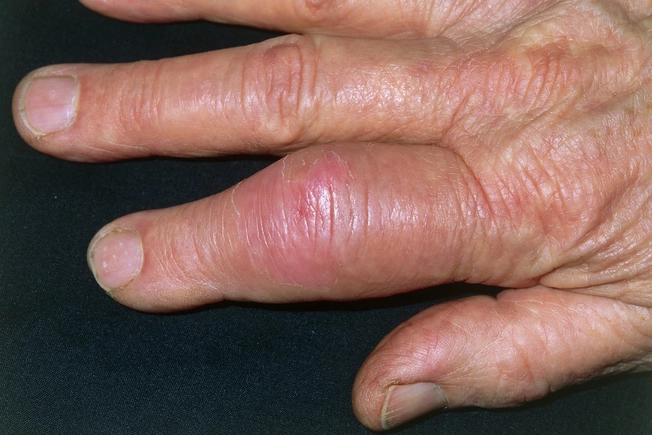Why Does My Hand Hurt?

Osteoarthritis
It happens when you injure or wear out the smooth substance called cartilage that covers the ends of your bones at the joint. It gets swollen, painful, stiff, and hard to move. The most common places for hand osteoarthritis are your finger joints and the area where your thumb and wrist meet. Rest, splints, anti-inflammatory drugs, and special hand exercises can ease symptoms. In severe cases, your doctor may suggest surgery.

Rheumatoid Arthritis
This disease affects the cells that are supposed to lubricate your joints. This "synovial tissue" becomes swollen and wears down the cartilage and bone. Inflammation might also spread to the tendons that link bone to muscle. Your doctor can help you manage pain and stiffness with medications, steroid injections, and in rare cases, surgery.

Carpal Tunnel Syndrome
The median nerve, blood vessels, and tendons go through a passageway in your wrist called the carpal tunnel. If swelling inside the tunnel pushes on the nerve, you may have pain, numbness, tingling, and a weakened grip. A doctor or physical therapist could help improve your symptoms with splints, steroid injections, or help you change the way you use your hands.

Peripheral Neuropathy
Over time, high blood sugar can damage the nerves that send pain signals to your brain, as well as the tiny blood vessels that nourish them. You may have pain, tingling, burning, and numbness in your hands, and they could become sensitive to even light touch. Your doctor can help you manage your symptoms with drugs, changes in diet, and exercise. They may also treat the diabetes or other condition that may be causing the problem.

De Quervain's Tenosynovitis
You may notice an inflamed and painful thumb and wrist, especially when you grasp or twist something. It happens when a tunnel called the first extensor compartment narrows or the tendons inside thicken. Repeated or new hand motions could cause it. So can hormone changes. Your doctor might treat it with splints and anti-inflammatories and in some cases, surgery.

Tendinitis
Tendons, the ropey cords that tie the small muscles of your hand to the bone, slowly wear down and get inflamed. Your palm or fingers may hurt, and the pain could move up your arm. You can treat it with ice, heating pads, splints, non-steroidal anti-inflammatory drugs (NSAIDs), and special exercises from your doctor or physical therapist.

Ganglion Cyst
It's a lump filled with liquid, most often on the top or bottom of your wrist, or at the base of your finger. It might change in size and even disappear. You could use anti-inflammatories to lessen pain and splints to stop certain motions. In more serious cases, your doctor may suggest draining it with a needle or in some cases, surgery.

Fracture
It's when you break or crack one or more bones in the hand, often when you fall or drop something on it. It may hurt and swell, and you could find it hard to move. You might even notice a change in shape. Your doctor can usually fix it with some type of cast or splint, but for more serious fractures, you may need surgery.

Sprain
Your ligaments, the tissue that connects your bones, can tear, often when you use an outstretched hand to break a fall. It typically affects the thumb joint or the middle knuckles on your fingers. Talk to your doctor if you have trouble using your hand, or the pain is serious or continues for more than a few days. Otherwise, use RICE -- rest, ice, compression (bandage), and elevation (raise it up) -- to lessen pain and swelling.

Strain
This is when you tear a muscle or tendon, often the tendons that connect the forearm muscle to your finger bones. It can happen suddenly in a fall or slowly over time, especially if you use your hands a lot at work by lifting, typing, or building stuff. Use RICE in the short term and see your doctor if the pain is serious or doesn't go away.

Trigger Finger
Sometimes a tendon that helps move one of your fingers can grow a kind of knot, or its smooth lining can swell. This might make it hard to use without pain or give you a feeling that something is "catching." A finger could even get stuck in a bent position. Splints and anti-inflammatory drugs sometimes help, but surgery may be needed to correct the problem.

Dupuytren's Contracture
The tissue just beneath the skin thickens more than it should in the palm of your hand and into your fingers. You might notice small bumps, holes, and lines in that area. It can cause your fingers to bend in towards your palm. It's usually not painful, but your doctor could suggest injections or surgery in serious cases.

Gout
A waste product called uric acid collects and forms crystals, often in the big toe, but also sometimes in the hand and wrist. It causes intense pain and swelling. Your doctor can help you treat an attack with rest and medication. Changes in diet and exercise, along with medicine, might lessen future attacks and other problems linked to gout.

Raynaud's Phenomenon
Blood vessels in the hands overreact to cold temperatures or stress. During an attack, they narrow and limit blood supply. This can make your fingers and toes cold and numb. They could even turn white or blue. As blood returns, they may start to tingle and hurt. Certain drugs can help symptoms and prevent tissue damage. In rare cases, your doctor may suggest surgery.